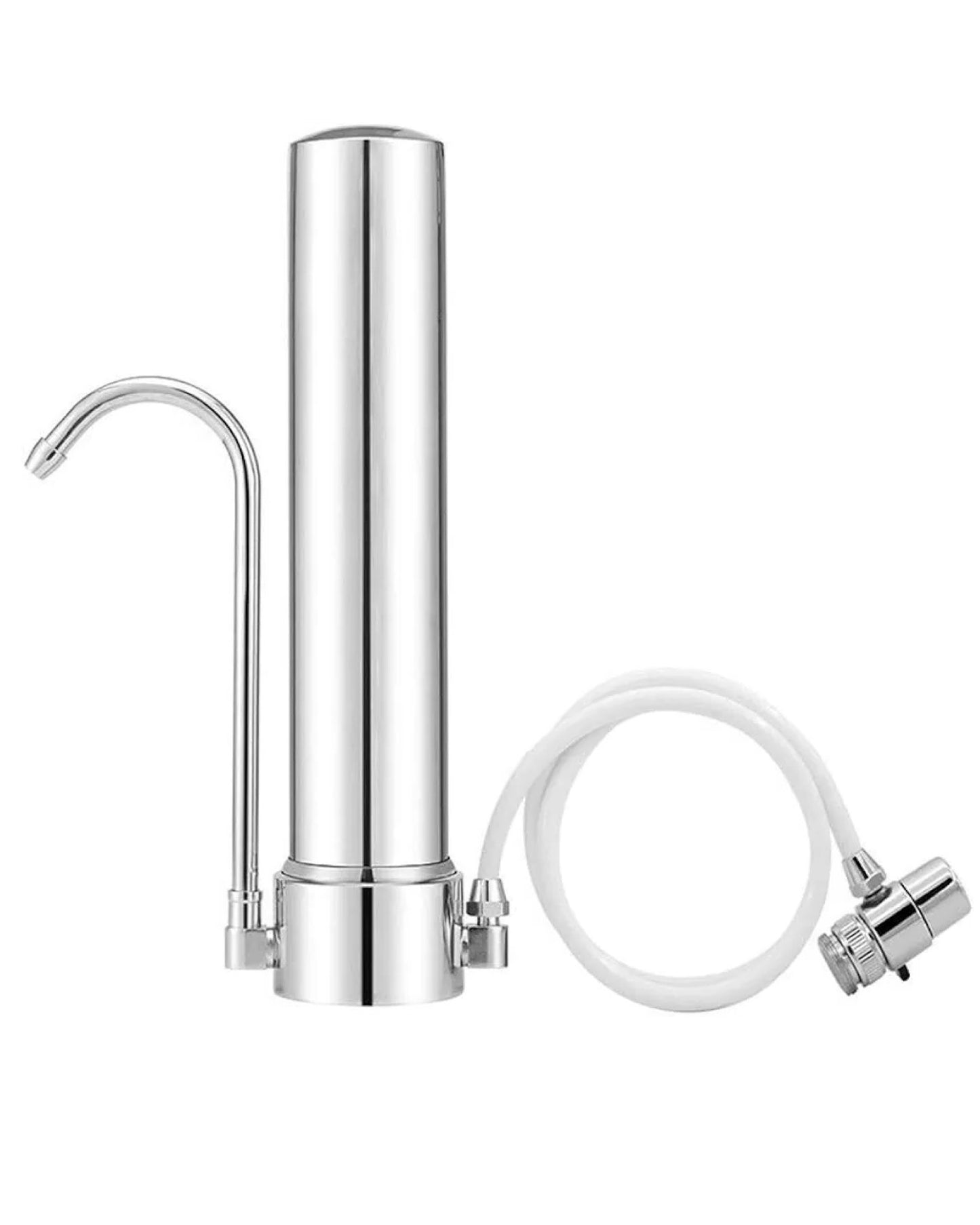Water Works Ultrafiltration (UF) Tap Filter — Frequently Asked Questions (FAQ)
1. What is the Water Works Tap Filter with UF Membrane?
A faucet-mounted ultrafiltration (UF) filter that connects directly to your kitchen tap. It's a 0.01-micron UF membrane that removes bacteria, suspended solids, and odors depending on the inlet water quality.
2. Is UF filter installation complicated?
No. It connects to most standard kitchen taps without tools or major plumbing.
3. How long will the UF filter last before needing replacement?
10–12 months depending on water quality and usage. The UF membrane will have to be replaced after 10–12 months.
4. Will this UF filter improve taste and smell?
Yes. It removes bacteria, sediment, and related odors for fresher water.
5. Is the Water Works UF Filter lab tested?
Yes. The UF Tap Filter has been tested by SGS and PCRWR labs, achieving 99.9% removal efficiency for total coliforms, fecal coliforms, and suspended solids after treating 8,000 liters.
6. Do we need a pre-filter for the UF membrane?
Not required for domestic water filtration.
7. What benefits does UF offer over conventional domestic water systems?
• Effective bacteria and fine suspended particles removal.
• Better taste of filtered water.
• Long 10–12-month lifespan.
• Reasonable cost.
• No electricity requirements.
• Stainless steel casing, durable design.
• Better taste of filtered water.
• Long 10–12-month lifespan.
• Reasonable cost.
• No electricity requirements.
• Stainless steel casing, durable design.
8. How does UF compare to a conventional 3-stage filtration system in Pakistan?
Most 3-stage systems (sediment + carbon + optional UV) improve taste, reduce chlorine, but:
• Often need electricity (UV models).
• Require multiple filter changes.
• Lack ultra-fine 0.01-micron filtration.
Our UF tap filter solves for these issues.
• Often need electricity (UV models).
• Require multiple filter changes.
• Lack ultra-fine 0.01-micron filtration.
Our UF tap filter solves for these issues.
9. What are the main limitations of UF filtration?
It does not remove dissolved salts (TDS) or heavy metals like lead and arsenic. It is not ideal for use in areas where there is lead and arsenic contamination in water.
10. How is UF different from reverse osmosis (RO)?
UF filters retain healthy natural minerals, work without electricity, waste no water, and run on normal tap pressure. RO, on the other hand:
• Costs more to buy and maintain.
• Needs high water pressure or a pump.
• Uses costly membranes.
• Wastes large amounts of water as RO reject.
• Requires adding synthetic minerals for health and taste.
Too expensive for middle and lower middle income households.
• Costs more to buy and maintain.
• Needs high water pressure or a pump.
• Uses costly membranes.
• Wastes large amounts of water as RO reject.
• Requires adding synthetic minerals for health and taste.
Too expensive for middle and lower middle income households.
11. Does UF waste the water like RO does?
No. UF uses all inlet water for drinking, whereas RO systems discard a portion of the water as reject.
12. Can UF handle high TDS water?
No. UF will not lower TDS or remove heavy metals. Additional treatment may be needed.
13. Why UF Is a Smarter Choice for Lower Income Pakistani Households?
• Power Outage Friendly — Works without electricity, perfect for areas with load-shedding and high cost of electricity.
• Low Ongoing Cost — Fewer parts to replace, long lifespan.
• Zero Water Waste — Every drop becomes usable water.
• Mineral-Rich Taste — Preserves naturally existing minerals in water for health and taste.
• High Pathogen Protection — Better bacteria removal than most conventional filters.
However, it is not suitable for areas where there is arsenic and lead contamination.
• Low Ongoing Cost — Fewer parts to replace, long lifespan.
• Zero Water Waste — Every drop becomes usable water.
• Mineral-Rich Taste — Preserves naturally existing minerals in water for health and taste.
• High Pathogen Protection — Better bacteria removal than most conventional filters.
However, it is not suitable for areas where there is arsenic and lead contamination.


